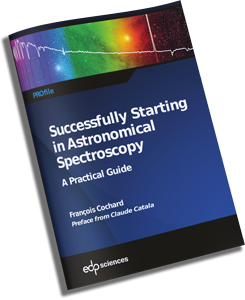Quasar spectrum with a Lisa or an Alpy
By Olivier Garde
The Lisa and Alpy spectrographs are particularly suited to the study weak objects. During the Spectro Party 2018 at OHP, we were able to realize the spectrum of a quasar of magnitude V = 16.52 with a 355mm telescope diameter.
Case of quasar S5 0014 +81
AD = 00h 17′ 08,47” DEC = +81° 35′ 08,13” (J2000)
Magnitude V=16,52 redshift z=3,36 to 3,41 (according to the various publications)
Also called 6C 001409+811809
SIMBAD : http://simbad.u-strasbg.fr/simbad/sim-basic?Ident=S5+0014+%2B81&submit=SIMBAD+search
With a distance of more than 12 billion light-years, this quasar is one of the most distant objects.
Pointing the target and making spectra
The target is very weak, it is necessary to do autoguiding on a nearby star while keeping the target in the slit of the spectrograph. The slit used here is 35μm.
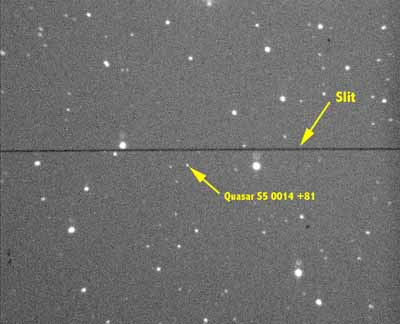
Autoguiding sensor field (ATIK 314L+)
The brighter stars are not lacking in the field of the autoguiding sensor. We will choose a star close to the Quasar and we will check that during the poses, the target does not leave the slit of the spectrograph.

Raw spectrum of 900s of Quasar S5 014+83 (ATIK 460ex in bin 1×1)
On a single exposure, the signal is not very important, it took a total of 3h (12 exposures of 900s) to improve the signal-to-noise ratio. The raw spectrum shows the Lyman-Alpha emission line.
It’s important to have on both sides of the spectrum an area without any stars that can be exploited to remove the sky background and remove the lines that are not those of the Quasar.
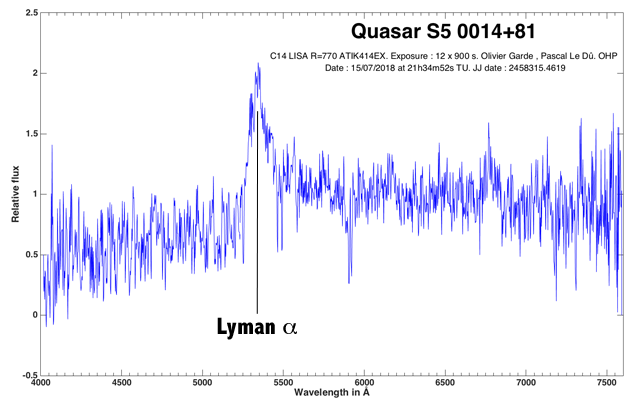
Processed Quasar Spectrum showing a broad and intense emission line of hydrogen Lyman Alpha
Distance measurement
The main line of the spectrum is the Lyman Alpha Hydrogen line, which at rest is at 1215.7 Å in the deep ultraviolet. It’s here in the field of visible because the redshift is very important. It is measured at 5345 Å, which makes it possible to calculate the redshift z = 3.396 (according to the publications the redshift of this Quasar is between 3.36 and 3.41).
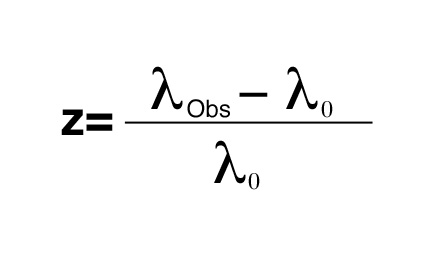
We can also calculate the redshift velocity of this quasar using the following relation:
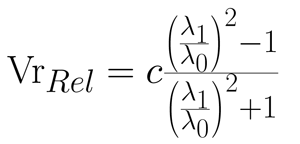
With c= 299 792,458 km/s and Vr in km/s, λ1 or λ obs, the observed wavelength, λ0 the rest wavelength
The distance can be calculated using the Hubble constant Ho = 73.02 km/s/Mpc, from the last known value, see
https://en.wikipedia.org/wiki/Hubble%27s_law) and we obtain a distance of 12.272.184.000 light-years with the following relation:

Comparison with the 1st “pro” spectrum
By consulting the various publications on this object, one notes that the first spectrum was realized on September 15, 1982 on a 2m30 telescope with an image intensifier for the sensor:
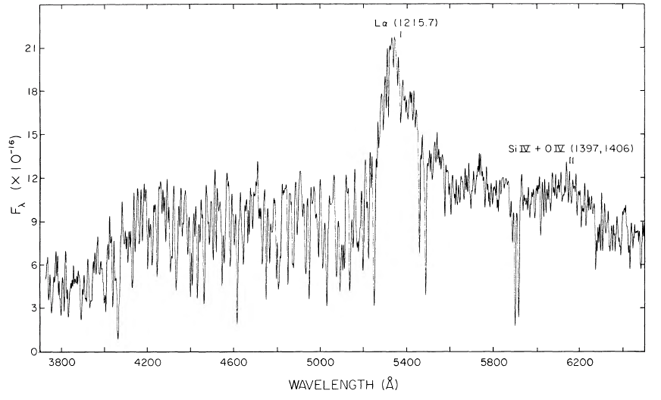
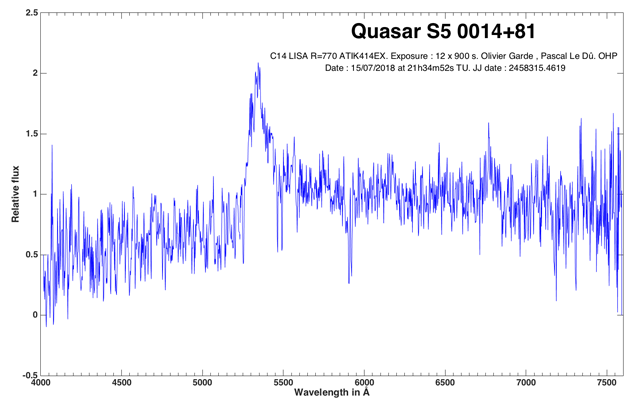
On the left, the spectrum obtained in 1982 on a 2m30 telescope, on the right, the spectrum obtained on a C14 (0.35m)
The two spectra are very similar and the many lines present in the spectrum are not just noise. Further analysis shows that in addition to the main Lyman-Alpha line, the lines N V 1240Å, Si II 1263 Å, O I 1305Å, Si IV / O IV 1402.5 Å and C IV 1549 Å can be seen.
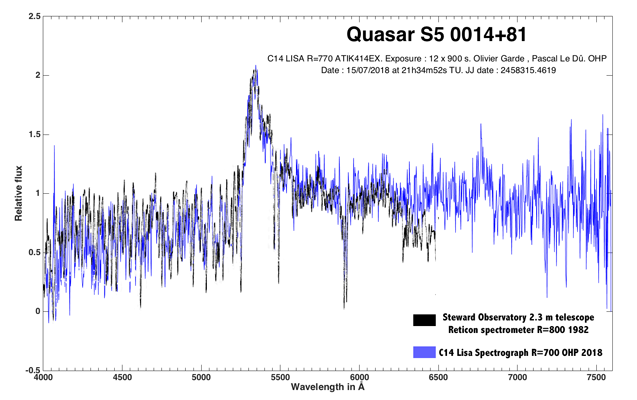
Superposition of the two spectra, one obtained in 1982 with that obtained with more modest setup in 2018
It’s a very interesting experiment to test the possibilities of this setup and push the spectrographs Alpy and Lisa spectrograph to the extreme limit which, thanks to their design and their efficiency, make it possible to obtain such results.
Bibliography
Some publications about this Quasar:
The most luminous quasar S5 0014+81 : http://articles.adsabs.harvard.edu/cgi-bin/nph-iarticle_query?1983ApJ…275L..33K&data_type=PDF_HIGH&whole_paper=YES&type=PRINTER&filetype=.pdf
Spectroscopy of the quasar S5 0014+81 : http://adsabs.harvard.edu/full/1987SvA….31..136V
Maximum cosmic redshift of quasars at Z>3 : http://adsabs.harvard.edu/full/1985MNRAS.213..389S
The effect of the Lyman-Alpha forest of very high redshift quasars : http://adsabs.harvard.edu/abs/1987ApJ…313..171S
